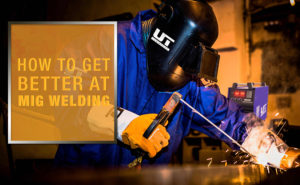
The best way of doing that is to run beads. And that can be done with a Tee joint. A simple tee joint allows you to run the bead straight by following the seam while ensuring each bead overlaps the previous one, halfway.
This type of tee needs gun manipulation for penetration and to avoid excessive convexity. In short, if you don’t do something to let the bead lay down flat, it may hump. Well, this is just a characteristic of this type of tee. But then, this happens because of the gravity.
You can either make use of an upside-down V technique or simply use triangles for metal spread out as welding without torch movement generally results in crowned bead.
This should be done by using similar settings that are used for flat or horizontal positions. Just that don’t set the machine colder as that can cause puddle. Instead, use a hot setting as that usually works better.
Typically, a short circuit MIG weld test is 3/8” thick plate test done with 30-37.5 degree bevels. Here, the roots pass is welded downhill, whereas the fill and cap are done uphill. As for the number of weld passes, it depends on the individual welder.
If you need to fabricate things from thin wall tubing, MIG welding is the ultimate. The best practices for the same are as follows;
I'm a cool paragraph that lives inside of an even cooler modal. Wins!
Success